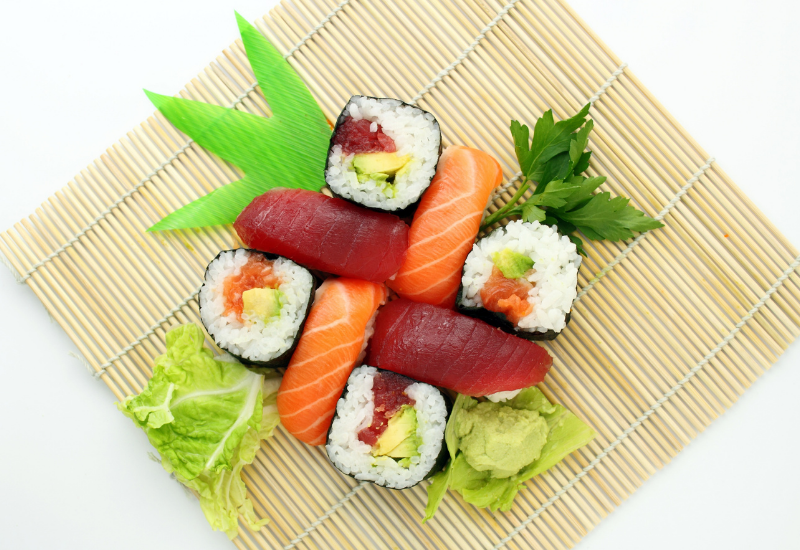Japanese food has a great impact, a strong influence on diners from all parts of the world. Its authentic flavors that blend with the intricate scents hinted Sakura petals and Hokkaido sea urchins – marking Japanese cuisine as one of the world’s most loved, extravagant cuisine. Although there are a plenty of Japanese food in restaurants, canteens, and ordinary food stalls along the bright-colored streets, the authentic tastes of Japanese dishes can only be tasted and experienced in a few places. As Japanese food requires a great deal of dedication to grasp the understanding of its intricate processes, this not only involves the seasoning of various meats, but as well the fine selection of fresh, quality ingredients used as Nigiri toppings and the forming of the authentic Japanese sushi rice. ‘Balance’ is key in Japanese cuisine – achieving equilibrium, the divine central taste that neither allows the inclination towards being overly Eastern nor fusing into something Western is a unique way of Japanese food preparation.
As remaining ‘authentic’ to the ‘Japanese flavors’ deemed highly crucial for Japanese chefs, achieving balance is a primary foundation to access the higher levels of accomplishments in cooking Japanese food. The absence of balance in Japanese cuisine will often lead to inclined fusion, which may be positive for diners who are new to the authentic, exotic flavors of raw ingredients found in sushi toppings – as fusing Western influences, the dabs of heavy cream here and there, may lessen the nerve-wrecks and the feeling of uneasiness dealing with uncooked ingredients. However, newbies loving the adventure may find it intriguing to join the crew, hop on the Samurai’s boat and travel the Tokimeki sea in Osaka – having the best dining experience with the fine selections of raw Salmon Nigiri, Fatty Tuna, and a plenty of dishes made of raw ingredients.
Of course, not all Japanese food lovers start off the strong game with raw fish and awkward-shaped sea urchins.
Starters may find it comfortable to gradually fit in the frame with cooked dishes like Yakisoba (stir-fried Japanese yellow-colored noodles with sauce and vegetables) or the famous Teriyaki chicken topped on hot, Japanese rice. Nevertheless, ‘sushi’ is probably the most popular Japanese dishes, and if you’re a Japanese food guru, you can’t miss trying out all sushi toppings to be the ‘expert’. If you’re typically new to Asian food in general, trying Japanese food (specifically sushi) would be a great stepping stone towards trying out traditional dishes of higher intricacy. As sushi is world-famous among other Japanese dishes, newbies may want to try out some of the cooked sushi toppings first and move on to the raw ones as time allows them to breathe in and be a little used to the tastes of Japan.
Although you might have an urge to just pick up that orange-colored piece of raw Salmon topped on Japanese rice and put it in your mouth straightaway, it is important to know that first impression can either make a positive turn to a really bad one.
So, if raw ingredients are definitely not on your ‘favorites’ list, trying out the raw Salmon right from the start can leave you questioning yourself a little. Not to let that happen and scare you off the bat, it is smart to try out cooked sushi like Unagi, Ebi, and Tamago. Unagi sushi is made out of cooked Japanese Eel with dabs of the special Nitsume sauce, topped on soft Japanese rice wrapped together tight with a slim piece of seaweed. It has an exotic taste of grilled Eel meat which blends really well with the sugary, yet savory tastes of Nitsume sauce, specifically made cater to the tastes of the bland ingredients, providing a more accented flavor to the entire dish. The Ebi or the cooked prawn topping and the Tamago sushi is also worth trying before starting with raw ones. Ebi has a soft, yet chewy texture which makes this topping famous for its delicate tastes rather than stronger, accented ones. The Tamago or sweet-egg sushi is also known to be among children’s most preferred sushi toppings with its mild sweetness and soft egg texture blending with a thin piece of seaweed wrap to keep the topping tight to the rice it tops.
